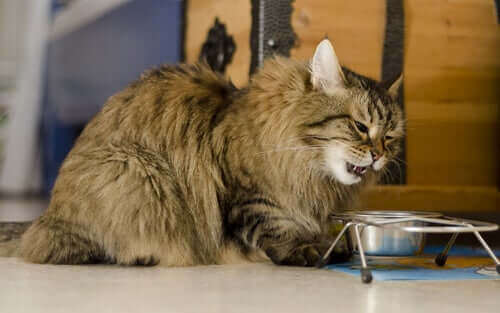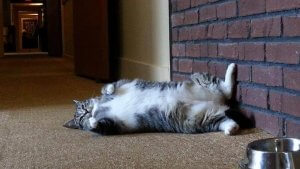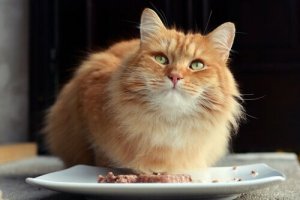Feeding to Prevent Diabetes in Cats
A carefully controlled diet is essential for treating and preventing diabetes in cats.

Diabetes can affect cats of all ages, but it’s more common in animals that are overweight, in neutered males, and in cats over the age of six. It’s a disease that requires ongoing treatment and a strict diet to keep it under control. However, maintaining a good diet and a healthy weight are also equally important for preventing diabetes in cats in the first place.
What is diabetes?
Diabetes is a disease that affects the pancreas, causing it to secrete little or no insulin. This causes severe hyperglycemia, meaning the cat will require insulin injections and a strict diet to bring blood sugar back down to normal levels. Obesity increases the risk of diabetes, in both dogs and cats. Other factors include age, genetics, or corticosteroid treatment.
The most common symptoms include:
- Polydipsia – polyuria: the animal drinks and urinates more often than usual
- Polyphagia – the cat seems unusually hungry and can eat huge amounts of food
- Weakness or lack of energy
- Loss of appetite
- Cataracts and other eye issues

A spike in glucose levels can cause serious symptoms. The cat may even require urgent medical attention.
Preventing and treating diabetes in cats
Nutrition plays a key role in both preventing and controlling diabetes in cats. As weight gain reduces insulin sensitivity, keeping your cat at a healthy weight is an effective way to reduce the risk of it developing the condition.
There are a number of factors to bear in mind when it comes to choosing the right pet food for your cat:
- Their ideal weight: their daily food allowance should match their ideal weight, not what they currently weigh. The correct portions are calculated in grams per kg of weight, and will be stated on the back of the pack. If you’re ever in any doubt, your vet should be able to give you an estimate of how much your cat should eat.
- Age: the energy requirements of a young kitten are not the same as those of an adult or senior cat. High-calorie kitten food can cause weight gain in adult cats.
- Neutering and gender: male cats often gain weight after neutering. Fortunately, you can buy cat food specially designed for neutered males.
- Disease: Cats suffering from health conditions such as kidney disease require special dietary management. Their food should be specially formulated, including or omitting certain ingredients to help combat the disease and keep them in good health.
The amino acid L-carnitine is added to many types of cat food. It helps maintain a healthy weight, reduces adipose tissue, and prevents obesity, all of which are important factors in the development of diabetes.

The ideal diet for preventing diabetes in cats
Because the pancreas is unable to produce insulin to regulate glucose in the body, diets designed to prevent or treat diabetes in cats are focused on reducing body weight to prevent obesity and lower blood glucose levels. Diabetes management diets:
- Are rich in protein
- Low in fat
- Contain small amounts of carbohydrates. Unrefined cereals and those with a low glycemic index such as barley or corn can help lower blood sugar more effectively than cereals such as rice.
- Rich in fiber. Fiber plays a huge role in glucose control. It slows down its absorption in the body and keeps blood sugar levels low. Some types of fiber, such as psyllium, also slow the digestion and absorption of carbohydrates.
- Have a lower starch content, which can also be beneficial for lowering blood glucose levels.
